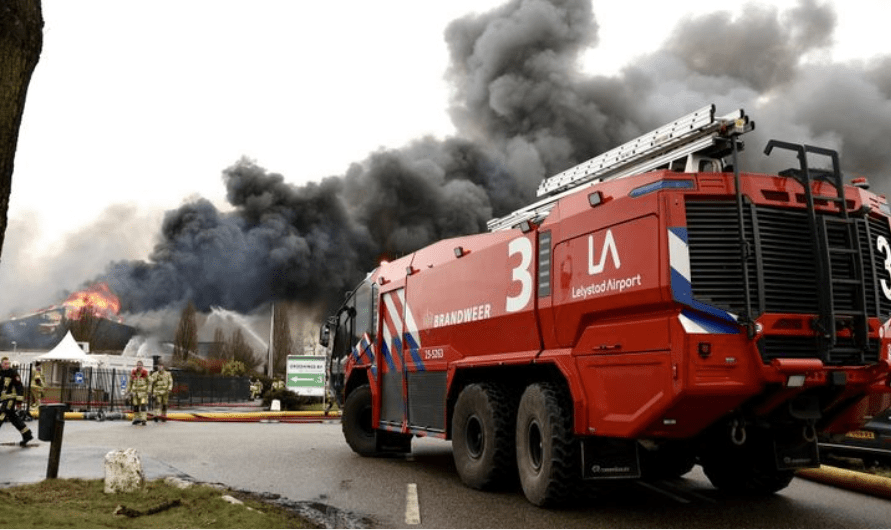During the recent fire in Rutten, the deployment of Lelystad Airport’s crashtender played a crucial role. With its powerful firefighting capacity and specific design for aircraft accidents, this fire truck proved to be a valuable asset in combating the flames and gaining control of the situation.
Read the article from Omroep Flevoland here, Tuesday, January 2, 2024 | 12:32
The fire brigade at Lelystad Airport responded to the large fire in Rutten with a so-called crashtender. Such a firefighting vehicle belongs to the largest and fastest category of firefighting vehicles available.
A crashtender is normally used in aircraft fires. The vehicle has, among other features, a 10,000-liter water tank, can carry 1,300 liters of foam on board, and can drive and extinguish simultaneously.
However, it is also useful outside the airport. According to the fire brigade, the crashtender plays a crucial role in protecting the residential house next to the burning warehouse, especially because the vehicle can get much closer and spray much more water at the same time.
The vehicle is not deployed very often, but it is called upon once a month. This often involves a minor incident during or after the landing of an aircraft.

The crashtender in action on the right
In addition to incidents at the airport, the vehicle is also deployed elsewhere. For example, it was used in a wildfire along the A6 near Lelystad. The airport’s fire brigade also took action in Soesterberg and in Kampen.
The fire brigade at Lelystad Airport has two crashtenders. The vehicle can pour a whole load of water over the fire at once. This put an end to the large smoke clouds.
The fire brigade has to ask the airport for permission to use the crashtender. The airport then decides whether it is possible. At Lelystad Airport, at least one of the crashtenders must remain behind.
The vehicles weigh 39 tons and are about 12 meters long. They run on HVO100 fuel, which is a biofuel made from, for example, frying oil.
The fire brigade does not have to pay for the use of the crashtender. “We are happy to contribute to our surroundings,” says the airport.”

